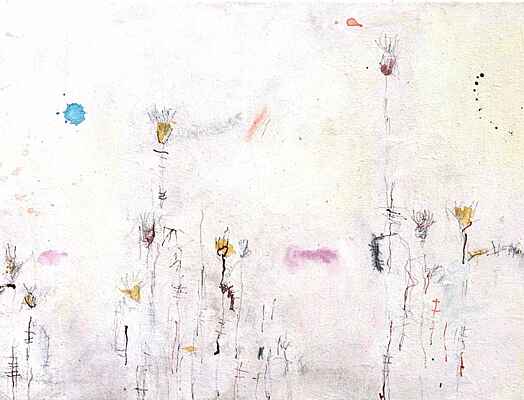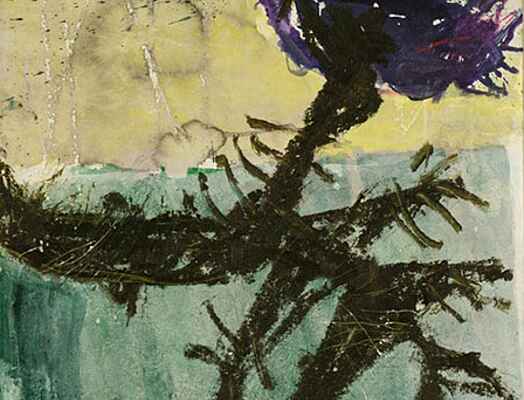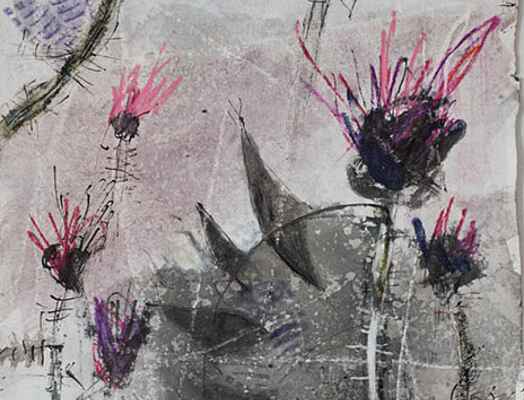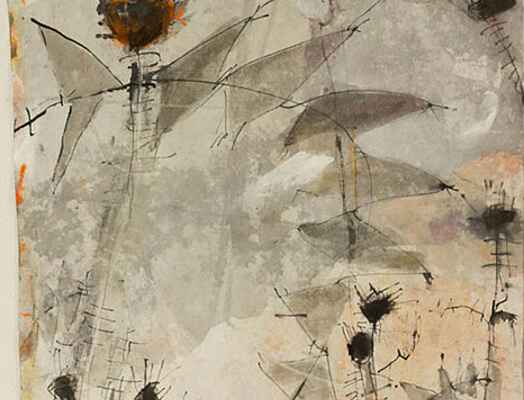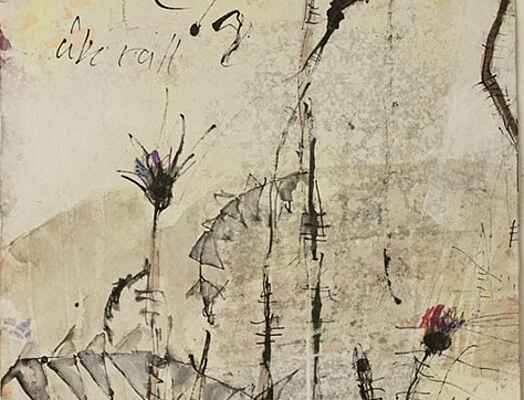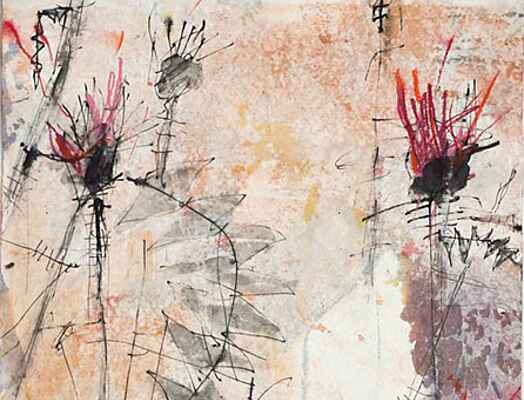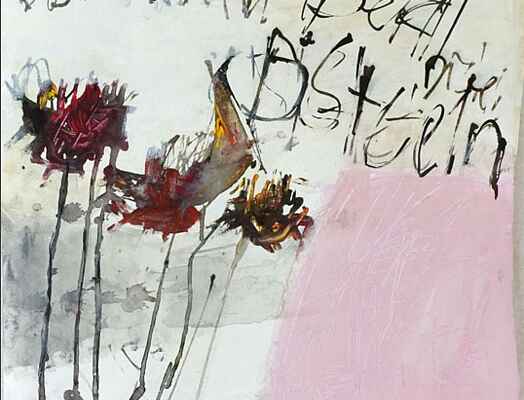Video-Invitation by
Dr. Matthias Rang
(German only)
International Conference
Dancing with Polarities –
The Human Being Between Nature and Technology
Autumn Conference of the
Natural Science Section at the Goetheanum
October 6 – 9, 2022
Dear Friends of the Natural Science Section at the Goetheanum!
In the 21st century, human beings live in response to contrary impulses such as those provided by the world of Nature and that of technological developments defining our times. Rather than seeing this as a polarity or even as good vs. evil, this conference seeks to illuminate the effects of each on the esoteric physiology of the human being. By carefully observing the consequences of our interactions with digital technology and with nature we will begin discovering the forms and gestures underlying each.
As human beings standing between the heavens and the earth, we embody many types of responses to the polarities within which we exist. A rhythmic alternation between expansion and contraction forms our heartbeat and our breathing, waking and sleeping, birth and death. In contrast, modern digital technology leads to automation and in turn automaton-like thinking. Rudolf Steiner outlines that human beings can develop a spiritual knowledge in which they rise just as high into the supersensible nature as they descend into sub-nature with technical activity. They thereby unfold within themselves the power to resist this risk.
A first step on the way to supersensible-nature is Goethean science. It creates healthy and conscious relations by exercising perception and a living thinking, as well as a field of practice for the reflection of the connection of both in cognition.
We invite you to explore this subject and the crucial role that the human being can play consciously in Nature and Technology.
Format
- We cordially invite you to submit short presentations of your research projects, for which a time frame of 15 min. with subsequent short discussion (approx. 5 min.) will be provided. In addition, or alternatively, projects can be exhibited as posters. We ask for titles and short summaries until September 15, 2022. Registration is possible here.
- The conference will be held in both german and english.
- The detailed program as well as the prices will be soon published on this site.
- If participation is not possible for financial reasons, please do not hesitate to contact us: science@goetheanum.ch
We are looking forward to your participation!
Johannes Kühl, Matthias Rang, Ruth Richter, Johannes Wirz & Mara Born
together with the Friends of the Section Collegium and the Youth Section
(subject to changes)

Uwe Buermann
Educational-therapeutic media consultant at the FWS Mittelrhein. Married, father of three. Founder and director of the "Pedagogical-Therapeutic Media Consultant" training course at the Berlin Teachers' Seminar. Guest lecturer at various teacher seminars. Research associate at IPSUM (Institute for Pedagogy, Sensory and Media Ecology). Author of numerous professional articles and books, most recently "Aufrecht durch die Medien".
The Otherworldly Foundations of Digital Technology and the Impact on Childhood & Adolescence
In this talk, the polarities of the Internet will be examined in more detail. On the one hand the Ahrimanic aspects using the example of modern semiconductor technology, on the other hand the Luciferic aspects using the effects of the Internet on the development of young people.

Vesna Forštnerič Lesjak
Pharmacist and farmer. Individual guidance of students for Goethean botany. Various research projects of Goethean plant knowledge for pharmacy and medicine. Since 2013 production company for food supplements and cosmetics, foundation and management of the association for further education in natural sciences “Sapientia” and the section for anthroposophical pharmacy and medicine in Slovenia. 2019 takeover of the ecological family farm and Demeter certification.
The Goethean Method Builds a Bridge From the Plant to the Human Being and Makes Healing Possible
In this seemingly dualistic world, one can reintegrate oneself back into the world through loving attention to nature and thoughtful work on phenomena. This can be found as a healing principle in various spheres of life. In this contribution, using the cyclamen as an example, a concrete path from the plant to the human being and the healing in certain disease tendencies is presented. The plant lives in the physical world between polarities such as heaviness and lightness, darkness and light, earth and cosmos, warmth and cold. The human being is also constantly confronted with these polarities in their inner life. Only the recognition of specific plant processes in the human being makes it possible to transform nature in such a way that a new remedy can emerge. In this way, "the I and the world" become one again.
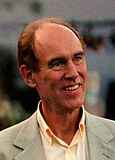
Andrew Linnell
Co-founder of MysTech, an Anthroposophical organization seeking to realize Rudolf Steiner’s indications on Mechanical Occultism. He retired in 2013 from his career in the computer industry where he had served as Solutions Architect, CTO, and VP. He has been president of the Boston branch of the Anthroposophical Society. His days are filled with gardening and active involvement in MysTech, the Natural Science Section, or as admin to several Anthroposophical Facebook groups. He is married, the father of three, and the author of nine books.
Counterbalances for Our Technological Age
Many fear that our modern society is sliding into the abyss. Is Technology to be blamed? Are we nearing the end of humanity's earthly evolution? Is Transhumanism the answer? Have we already succumbed to Ahriman? We can come to appreciate Rudolf Steiner’s grim picture of the future by knowing the role in evolution that technology must play. Steiner called it “the terrible truth that must be known.” This talk will explore counterbalances that enable us to stand within this “pandemonium”. In particular, we will look at “refined breathing.”
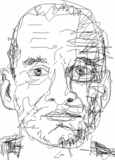
Hansjörg Palm
Freelance sculptor with base camp in Freiburg / DE. Visual arts studies in Bonn and London. Natural science studies with J. Bockemühl and G. Maier. Landscape design of the Goetheanum forecourts together with M. Schubert in cooperation with the Natural Science Section. Today focus on planing and realisation of SenseParcs.
Designing From Polarities. Using Examples From the Goetheanum Landscape and Architecture
The example of the plant provides the purest demonstration of creating from polarities. To show the complex laws of becoming from which she produces her dance steps and transformational figures, andwhile at the same time to discoverdiscovering them in himself, was a concern of Goethe's and pioneering for organicnatural science. The site on which this conference takes place was named after himGoethe and still provides unique examples of artistic design out of polarities in the field of landscape design as well as architecture.
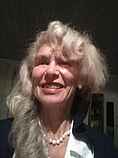
Ruth Richter
Agricultural and gardening apprenticeship in Switzerland. Concept and management of a biodynamic mountain farm in a collective. Goethean plant morphology: training and research projects with Jochen Bockemühl et al, Dornach. Research project on transgenic plants with Johannes Wirz et al. Study of philosophy of science and history of science, philosophy at the universities of Bern and Basel. Since 2015 editor in charge of "Elemente der Naturwissenschaft".
“I can only – when I look at you – lament, cry.” – Ways Out of Polarisation
Closing Lecture
Ruth Richter
The quoted sentence from Rudolf Steiner's third mystery drama can be read as a literary form of criticism of the rational human being, which the philosopher Heinrich Barth expressed in a lecture at the ETH Zurich in 1957. He describes the field of tension between reason that has become fossilized into fixed facts, as it confronts us in our technologically shaped existence, and a living reason that – as an unavailable gift – makes us human: a being that is capable of finding meaning in its existence and of radiating it again in meaningful action. In Steiner's third mystery drama the quoted statement by Strader marks a turning point: if Strader was able to encounter Ahriman in his realm earlier, he now - standing in this realm - gains a soul sensation which frees him from Ahriman's influence. This can become a seed for the development of supernature, the ability to not be pulled down in dealing with technology and subnature. We follow Strader's path out of his own polarization and connect it with today's challenges of mankind.
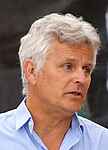
Tom Saat
1976–1982: Studied soil science in Wageningen and philosophy in Amsterdam. 1982–1990: lecturer/researcher in biological agriculture in Wageningen. From 1990: Practical farmer. 1995: Foundation of the Demeter farm “De Stadsboerderij” in Almere: mixed farm with cattle husbandry, arable farming and vegetable production of 230 hectares.
Without Technology No Production, Without Spirit No Farming Culture: Using Subnature to Shape Supernature
Over the last hundred years, social development has led to a decline in the agricultural labor force in Europe from about 50 % to only 4 % of the population. Human labor has been replaced by technology. The implementation of technology can lead to a more mechanistic and less soulful approach of farming. But it can also be used to take over routine work and create more space for the essence of the farming practice: the intercourse with the realm of living nature. Examples from the speaker's own farm are used to show what this means and how subnature and supernature are both elements of a fruitful farming future.
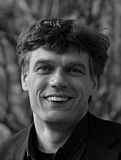
Martin von Mackensen
Machine fitter, tool mechanic. Worked on the projects 7000 Oaks for Kassel and Dokumenta 7. 1981–1985: Joseph Beuys, farmer, co-entrepreneur in a pioneer farm, moved to the Dottenfelderhof. 1990: participant in the study year at the Goetheanum. Since then practical farmer at the Dottenfelderhof. Since 2002: increasingly responsible for the training and the "Landbauschule Dottenfelderhof" technical school (full time course Biodynamics), and its headmaster since the state recognition in 2009. Lecturer at the University of Geisenheim / Fundamentals of Biodynamic Agriculture.
Caring For an Organism - Dimensions of Agricultural Work
In this contribution, the essence of agricultural work in relation to the inner spirit will be explored through concrete examples. Key skills for future work with culture-nature will be highlighted and the perspective required for this work will be elaborated.
AG 1
Bildekräfte oder Gentechnik: Welche Zukunft für die Pflanzenzüchtung?
(DE only)
Grundlagen der klassischen Züchtung und biodynamischer Züchtungsmethoden werden vorgestellt und diskutiert. Genforschung, Gentechnik und CRISPR-Cas werden an Anwendungsbeispielen bei Pflanzen erörtert. Über Geruch und Geschmack versuchen wir Qualitäten von Produkten aus gentechnisch veränderten Pflanzen und aus mit Beeinflussung der Bildekräfte selektierten Linien zu erfahren und diskutieren Herangehensweisen und wissenschaftliche Hintergründe.
AG 2
Heilmittel-Entwicklung in der Pharmaindustrie und in der Naturmedizin und die besondere Art des menschlichen Denkens und Vorgehens
(DE only)
In diesem Workshop wollen wir auf einerseits darstellen, wie Heilmittel durch technisch-digitalisierte Prozesse, welche der Mensch in der konventionellen Pharmaindustrie benutzt, entwickelt werden und andererseits, wie man Heilmittel mit eigener Betrachtung der Naturprozesse entwickeln kann, sodass man aus dem vertieften Verständnis dieser Prozesse den natürlichen Substanzen eine bestimmte Richtung gibt. Auf beiden Wegen benützt man sein Denken auf bestimmte Art. Wir werden uns – anhand einiger Beispiele und konkreter Erfahrungen im Worksho – darüber austauschen, wie diese besondere Art des Denkens und des daraus entstandenen Handelns sich in den Menschen selber spiegelt und auf sie zurückwirkt.
Vesna Forštnerič Lesjak
Pharmazeutin und Landwirtin; Individuelle Begleitung von Studierenden der goetheanistischen Botanik; verschiedene Forschungsprojekte in goetheanistischer Pflanzenerkenntnis für Pharmazie und Medizin. Seit 2013 Produktionsfirma für Nahrungsergänzungsmittel und Kosmetika, Gründung und Leitung des Vereins für naturwissenschaftliche Weiterbildung «Sapientia» und der Sektion für anthroposophische Pharmazie und Medizin in Slowenien; 2019 Übernahme des ökologischen Familienbauernhofes und Demeter-Zertifizierung.
Carsten Gründemann
Diplom in Biologie an der Universität Tübingen (D), Promotion in experimenteller Immunologie. Aufbau einer unabhängigen präklinische Forschungsgruppe am Uni-Zentrum Naturheilkunde des Universitätsklinikums Freiburg auf und habilitierte sich an der dortigen Medizinischen Fakultät für Experimentelle Medizin. Seit 2016 Erforschung der Therapiekonzepte der Anthroposophischen Medizin und der Phytotherapie mit modernen wissenschaftlichen Methoden. Seit 2020 Professor für Translationale Komplementärmedizin an der Universität Basel.
AG 3
Wie Technik aus Zusammenhängen isoliert. Können wir durch Technik wirken und gleichzeitig die Zusammenhänge sehen und erleben?
(DE only)
Am ersten Tag wollen wir ein Bild davon bekommen, wie sich die Technik der ersten Dampfmaschinen, die noch mit Hilfe des atmosphärischen Luftdrucks funktionierten, zu späteren Maschinen veränderte, so dass sich die Funktion zunehmend aus der Umgebung isoliert hat. In den elektrischen Geräten sind dann auch die Wirkungen nicht mehr beobachtbar. Mehr und mehr entzieht sich uns eine Anschauung der Technik und in der Digitaltechnik trennt sich die inhaltlich-begriffliche Ebene von den (unbeobachtbaren) Wirkungen gänzlich ab. Am zweiten Tag werden wir uns anschauen, was diese Isolation einerseits und die Trennung von Begriff und Wirkung andererseits für den Menschen bedeutet. So kann man beobachten, dass wir Menschen Charakteristika der Technik verinnerlichen. Welchen Anforderungen an unser Bewusstsein entstehen daraus? Rudolf Steiner sprach von dieser Herausforderung und möglichen Schritten im letzten Michaelbrief, den wir zusammen bearbeiten. Auch blicken wir auf den Vorschlag von Stefan Ruf, der von der Notwendigkeit zur Entwicklung eines atmosphärischen Bewusstseins sprach.
Kees Veenman
Studierte experimentelle Physik in Utrecht (1973–1979). Physiklehrer an der Waldorfschule in Haarlem ab 1982. Aktiv in Farbenforschung ab 1985. Seit 1998 Koordinator der Naturwissenschaftlichen Sektionsgruppe in Holland und Mitglied des Internationalen Kollegiums der Naturwissenschaftlichen Sektion in Dornach.
AG 4
A Goethean Study of Nitrogen – Morality matters
(EN only)
We will observe the behaviour of nitrogen compounds, some of them naturally occurring and others created by human chemists. Out of the several experiments done over two days, we will uncover the intrinsic nature of the element that makes possible wind and movement, feelings and thoughts, green leaves and red blood. Through the biography of Fritz Haber, we will consider the question of the moral and immoral uses of nitrogen chemistry. Come prepared to do some chemistry, to discuss the similarities and difference between nitrogen’s naturally occurring compounds and its human-created ones and to express Nitrogen’s essence in a drawing, a poem, a movement sequence or a song.
Maria E. Morales
Scientific training in genetics and forest ecology from U.C. Berkeley. Training at Rudolf Steiner College, MA in Waldorf education. Teaching at the Waldorf School of San Diego. Personal research into forms found across the plant and animal kingdoms with a special interest in Crinoids.
Judith Erb
Born and raised in a North Dakota farm family. B.S. in chemistry from the University of California, Berkeley, M.S in biochemistry from Cal Tech. Work on hormonal desynchronization in schizophrenia at the research faculty at Wayne State University and Lafayette Clinic in Detroit, Michigan. Class teacher at the Rudolf Steiner School in Ann Arbor Michigan as well as its high school's founding teacher of biology and chemistry. Together with her husband, she founded Threefold Sensors and became its CEO. She is working with Arie Van Ameringen to translate into English Otto Wolff’s book entitled “Fundamentals of Biochemistry as Extended by Spiritual Science”. School for Spiritual Science since 1995, member of the Steering Committee of its Natural Science Section for North America.
AG 5
Towards a Spiritually Empowered Relationship with Technology
(EN only)
To be in the world today means that we find ourselves conditioned and embedded in a deeply complex techno-sphere that constantly interacts, shapes and reflects societal processes, our relationship with the natural world and ultimately the formation of modern consciousness, whose further exponential development will be the determining factor of our civilizational future. We are compelled to ask if our relationship with the technologies that surround us enable us to live more purposefully and in greater connection with the fullness of reality or if the techno-sphere around us increasingly detaches us from it. This workshop will be an exploration, through a series of phenomenological exercises, into how our digital experiences and interaction with various emerging technologies (such as AI) take root in the subtle aspects of our consciousness and become either obstacles or opportunities in the discovery and unfolding of the deeper nature of our cognition. The objective will be to recognize the significance of developing an active life of sense-free thinking with the guidance of Aristotle's Categories, as well as the practice of Goethean phenomenology.
AG 6
Rhythm and Repetition: A Phenomenological Exploration with Water
(EN only)
Rhythm is inherent in the natural world, possibly in every organism, arising in the play between polarities both in time and in space: we speak of the pulse of life. Repetition is inherent in our technological creations: it has been designed into them to give us reliable function and quality. These aspects live in us more or less consciously when we engage in the world. Every phenomenon in Nature tells a story with its emerging, manifesting and dying away. Rhythm arises in a variety of fascinating ways in the medium of flowing water. Following Goethe’s approach and using hands-on flow experiments, we can allow water to educate us into the nature of rhythm – it is part of the formative nature of "water" the element and illuminates the way this works in life. We will reflect on these experiments in a particular way and hope to elucidate this spectrum of repetition and rhythm. Such Goethean phenomenology not only allows us to see meaning in a holistic way but can also transform us as observers and enable our reconnection to nature in a free creative way.
Simon Charter
Farming in Camphill, disciplined artistic training. Establishing a business with Flowforms and Rhythmic water sculptures originating in the work of John Wilkes. Teaches clay modelling and gives presentations revealing water phenomena. Master in education, with focus on the Flowform idea and projective geometry. Developing new Flowform designs and applications in the UK. Joint chair of the International Flowform Association, co-ordinator of the Natural Science Section of the Anthroposophical Society in Great Britain.

Art 1
Evening Immersive Experiences
Andrea de la Cruz, Jacinta Gorchs, Darius Matthies, Yasmin Ribeiro Penido & Xavier Moretti Yrure
Sensing the threshold between nature and technology and our relationship to it as human beings. In collaboration with young local artists, the Youth Section at the Goetheanum invites the participants to courageously delve into an immersive journey on two of the conference's evenings. Together we will attempt to awaken, enhance and fine-tune our senses to explore Nature and Technology and the resonance their qualities have in the human soul. Furthermore, we hope to create an opportunity to research– through participation –the relationship between these two worlds and our own humanity in connection to them. The experience is co-created by Darius Matthies, Elias Romualdez, Jacinta Gorchs, Andrea de la Cruz, & friends who put theatre, music, installation, the art of speech and eurythmy into dialogue to enable knowledge through experience to arise.

Andrea de la Cruz
Born in Madrid. Waldorf school and two art degrees from British universities, certificate in Waldorf education. Since 2011 project coordinator, researcher and facilitator in youth-oriented projects. Developing informal learning programmes for unemployed and vulnerable youth. Staff member of the Youth Section since 2017.

Yasmin Ribeiro Penido
Born in São Paulo. Waldorf School Colégio Rudolf Steiner de Minas Gerais. Study in curative education, social therapy and Waldorf education at the CRSMG, Brazilen. Theatre studies at the University of Ouro Preto, Brazil. Waldorf kindergarten teacher at Ipê Amarelo, Ouro Preto, Brazil. Anthroposophical year of study in Dornach.

Jacinta Gorchs
Born in Buenos Aires. Waldorf School San Miguel Arcángel. 2018 European trip, including a visit to the Goetheanum. 2019 Studies in Social Work at the UBA (University of Buenos Aires). 2020–2021 Anthroposophical study year in Dornach, since October 2021 student at the Wagner School of Painting. Staff member of the Youth Section since February 2022.
Xavier Moretti Yrure
Born in Rosario. Waldorf School El Trigal in Córdoba, Argentina. Co-founder of the Casa de los Jóvenes Foundation, founding of a publishing house and two years working as a bookbinder. 2022 Volunteer at the Freie Waldorfschule Darmstadt for one semester. Since May in Dornach, collaborator on the stage at the Goetheanum with Faust. Anthroposophical study year and active collaboration in the Youth Section.

Darius Matthies
Year of study, Youth Initiative Program, Järna, Sweden. Training as a storyteller, Emerson College, England. Further training: Fundamentals of Trauma Work, Transparent Communication and Meditation, Academy of Inner Science, Oldenburg. Kundalini Yoga Teacher Training, Level 1, Witten. Training in speech formation at the Word, Dornach and the Free University of Applied Sciences, Stuttgart. (ongoing). Further training in Somatic Experiencing, UTA, Cologne (ongoing).
Art 2
Thistle – Exhibition of Paintings
Florianne Koechlin
There will be an exhibition of selected paintings by Florianne Koechlin during the conference in the halls of the Rudolf Steiner Halde. In her paintings the artist combines science and art, and depicts (among other things) the communication of plants in her own unique way.
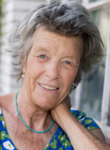
Florianne Koechlin
Biologist, chemist and author. She graduated with a chemistry diploma from Middlebury College, Vermont, and a senior teaching diploma in biology and chemistry from the University of Basel. From 1979 until the end of April 1984, she represented POCH in the district council of the canton of Basel-Landschaft.ie and became known as a critic of genetic engineering and author of various books and numerous articles. She is concerned with new findings on plants and other living beings (especially plant communication and networks of relationships) and with sustainable concepts in agriculture. She is also the managing director of the Blauen Institute and active in painting. Painting training at the Visual Art School Basel.
"And all the times I was picking up potatoes, I did have conversations with them. Too, I did have thinks of all their growing days there in the ground, and all the things they did hear. Earth-voices are glad voices, and earth-songs come up from the ground through the plants; and in their flowering, and in the days before these days are come, they do tell the earth-songs to the wind ... I have thinks these potatoes growing here did have knowings of star-songs."
(from "Opal: The Journal of an Understanding Heart")
Project Presentations
The project presentations are intended to allow you to share current research, book or projects with colleagues through short verbal contributions. Following each presentation there will be opportunity for brief conversation.
In addition, or alternatively, projects can be exhibited as posters.
Themes:
Topics for contributions can come from any field of science, Goethean observation of nature, formative forces research, development of research methods, application of research results and science education.
Format:
15 minutes presentation followed by a short talk of three to five minutes.
You may hold your research presentation in either German or English (no translation).
The German presentations will be held at the Halde Saal - the English ones at Glashaus Middle Room.
Friday, October 7
3 pm - 4.15 pm
German Presentations at the Halde Saal (no translation)
English Presentations in the Glashaus Middle Room (no translation)
«Epigenetische» Züchtung aus der Zukunft heraus
Entwicklung von Löwenzahn als Kulturpflanze. Wirkungen von eurythmischer und v.a. meditativer Behandlung des Saatgutes als ein Beispiel «gezielter» epigenetischer Einflussnahme aus dem Ätherisch-Geistigen heraus., mittels einer kultisch durchgeführten Behandlung im Rückgriff auf die Mantren der 17. Klassenstunde.
Eine Landwirtschaft in Brüderschaft mit Bäumen
Methodologische Ansätze: aus einem tropisch geschulten Goetheanismus entwickelt. Die (tropische) Landschaft sprechen lassen: was spricht sich aus in den Wäldern, den Savannen, den Halbwüsten und der Wüste? Tropen als Landschaftslabor einer Welt von Morgen. Eine hitzebeständige Landwirtschaft? Ein Stockwerk Aufbau, Artenvielfältig & Wassersparend, von innen heraus Klimafreundlich. Am Gerüst des Kohlenstoffs (Lignin) werden kreative neue Lebenskräfte eingebunden. Erträge trotz Hitze und Dürre.
Tunnel Vision and the Coloured Shadows
A viewing tube is one of the simplest instruments to be used in science and yet it can produce contradictory research results depending on the way(s) it is employed. Problems with viewing tube experiments led to a major controversy in anthroposophical natural science in 1922 and this controversy has continued to the present day. A reconciliation between the two opposing viewpoints is possible by combining the findings of the history and philosophy of science with knowledge from experimenting.
What's Beauty got to do with it?
Study color in nature and inevitably beauty finds you – it did me, and beauty became essential to my research. But what's its role in science today – is it even part of the equation? Turns out theologians and, surprisingly, artists are asking the same question: what happened to beauty? I'd like to share some thoughts out of my ongoing inquiry and my experiences with my camera (technology) in studying seasonal color (nature) – and ask how, and if, we'd like to invite beauty back into our dance.
Into the Wild
People have domesticated crop plants by selecting for higher yields, better taste and ease of harvest. In some cases, this resulted in cultivated species that have become totally dependent on humans. In our work we set out to discover natural defense strategies in wild tomato species. We have focused on volatiles that plants produce to communicate with insects. I will take you on our journey into the wild, with its striking discoveries and the possibilities of natural crop protection...
Saturday, October 8
3 pm - 4.15 pm
German Presentations at the Halde Saal (no translation)
English Presentations in the Glashaus Middle Room (no translation)
Zur Ordnung der Formen im Tanz zwischen Polaritäten
Erkennen erfordert eine Suche, so wie die Muttermilch gesaugt werden muss. Jede Suchrichtung wird gedanklich allgemein erfüllbar durch Begriffe, die eine Polarität bilden. So betrachtet können alle Organismen sich zeigen als Strukturierer von dynamischen Gleichgewichten, die in begrifflichen Polaritäten fassbar sind – je nach Suchrichtung z.B. als Saugen/Widerstehen, Zug/Druck, Fliessgleichgewichte, usw. Goethes Idee von Polarität und Steigerung verlegt diese Dynamik in die Materialität selbst.
Die Bedeutung der Lichtwurzel als Nahrungsmittel
Was ist die Besonderheit der Lichtwurzel? Was kann sie dem Menschen als Nahrungsmittel bedeuten? Kann ihr Anbau als Nahrungspflanze in Mitteleuropa auch im Grösseren Fuss fassen?
Das sind Fragen, denen ich in dem Forschungsprojekt nachgehe. Anhand von vergleichenden Pflanzenbetrachtungen und menschenkundlichen Überlegungen soll in der Präsentation eine Annäherung an die Bedeutung der Lichtwurzel als Nahrungsmittel versucht werden.
Freiheit oder Vorbestimmung? Polarität zwischen Wärme und Elektrophysiologie im menschlichen Organismus
Ist menschliches Verhalten durch unbewusste elektrische Hirnprozesse vorbestimmt? Ist Wärme im Herzen und in unseren Muskeln nur unnütze, chaotische Abwärme von Stoffwechselprozessen? Bei Messungen des Bereitschaftspotentials vor spontanen, kommandierten und nicht durchgeführten Bewegungen konnten diese elektrischen Hirnprozesse als physiologiches Korrelat von bewussten Vorstellungen ohne Zwang oder Notwendigkeit zur Durchführung verstanden werden. Entsprechend kann im Anschluss an den Wärmekurs die Entwicklung von Wärme in Herz und Muskel als seelische und physiologische Möglichkeit für Wirkungen des freien Willens verstanden werden. Eine erweiterte Thermodynamik fern vom absterbenden Gleichgewicht kann durch ihre Unvorhersagbarkeit den Übergang von geistigen Impulsen bis in Substanzvorgänge hinein auch physikalisch verständlich machen.
Eurythmy as a Counterpart to Computer Technology
Da Vinci used his alternating engagement with art and mechanics to develop his imaginative faculties. During the birth of electronic engineering, Beethoven developed new forms of musical expression. When the foundations of computer technology were laid, Steiner extended the qualities of movement through eurythmy. What is the law behind this and why did Rudolf Steiner teach his esoteric pupils in Berlin Eurythmy in this way: cross your arms and legs, but don’t move them while doing so?
Fluid: From Motion to Machine Learning
The discovery of the varied and complex movements of matter within fluids has been associated since the Renaissance with the quest for technical mastery of flows. But the link between the emergence of forms in or by a moving fluid and those resulting from the genesis of living beings opens another dimension. This other dimension deepens when concepts are understood as coming from movement. Now, technology to control fluids invites AI to the rescue. What can be seen in that?
Feeding Domestic Animals: Back to Observation
A brief description of how we at FiBL (Research Institute of Organic Agriculture) are trying to bring the animal back into research on feeding from the point of view of its behaviour. How can we learn from the animal what it needs instead of forcing it to need?



